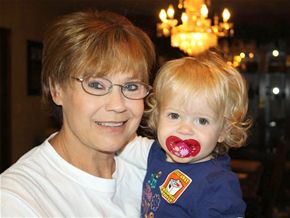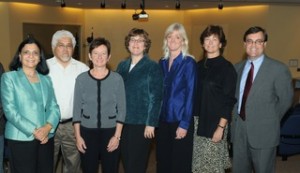West Wind’s 10th Anniversary: A Time to Give Back
This year West Wind Education Policy, Inc. is celebrating its 10th anniversary. To honor the goals and purposes of West Wind, staff chose to celebrate by completing service projects in our community to support local K-12 education. In June, the West Wind team assisted the Mayor’s Youth Empowerment (MYEP) and Fast Trac Program as they transitioned into a new building. MYEP provides day-habilitation, respite, residential, after school and summer care opportunities for youth and adults with disabilities. The Fast Trac Program provides support for youth in grades 4 through 12, bringing together teachers, community leaders, families and students to provide activities, events, mentoring and academic guidance to students. The Fast Trac program offers the following as a statement of purpose:
“Our goal is change. Giving students a reason to change has always been the missing piece in motivating students to focus on their education. Since the FasTrac Program began, these students have exceeded all expectations set by themselves and by their parents. This program has grown from six original African-American students to currently over 100 students of all ethnic backgrounds. Additionally, the program assists students in 4th through 12th grade, now with a program for elementary school students, FasTrac-E, which follows each student in the program beginning in 4th grade, all the way through their high school career.”
MYEP and Fast Trac are amazing organizations, getting wonderful results for students. When we arrived, the staff was busy preparing materials for students and moving equipment through the rooms. Donated art work had been hung on the wall; games, books, and toys filled the rooms; foosball tables and televisions were available as well as school and art supplies. We spent the morning wiping out bins, locating missing puzzle pieces, dusting furniture, arranging books, and even moving a very heavy foosball table.
 On the morning of August 3 the West Wind team joined other volunteers and organizers from To Gather Together, a local organization that gathers donations to buy school supplies from churches, individuals, businesses, and social services agencies. To Gather Together provides school supplies to over 3,000 children in Johnson County, Iowa. West Wind staff assisted by counting out supplies such as crayons, markers, folders, and paper. We sorted the supplies into stacks for specific schools and teams of volunteers delivered these the next day.
On the morning of August 3 the West Wind team joined other volunteers and organizers from To Gather Together, a local organization that gathers donations to buy school supplies from churches, individuals, businesses, and social services agencies. To Gather Together provides school supplies to over 3,000 children in Johnson County, Iowa. West Wind staff assisted by counting out supplies such as crayons, markers, folders, and paper. We sorted the supplies into stacks for specific schools and teams of volunteers delivered these the next day.
West Wind wants to offer our thanks to both the Mayor’s Youth Empowerment/Fast Trac Programs and To Gather Together for providing us the opportunity to support them in their work. Both of these programs are an amazing asset to our community and the staff and volunteers who make these programs function deserve a round of applause for their hard work and dedication to education for all children. Thank you on behalf of the West Wind team. It is heartening to work with individuals on the ground dedicated to educational opportunities for each and every child.


 The West Wind Education Policy web site describes our work in the area of knowledge building and professional development as being based on theories of andragogy–or adult learning. The study of adult learning theory and experience in designing and supporting professional development for educators has taught us a lot about the way teachers and school leaders learn when engaging in professional growth experiences. Andragogy theories suggest that adults need to learn experientially and to be actively involved in the planning and evaluation of their instruction. We know that adults learn best when the topic is of immediate value. We know that experience (including mistakes) provides the basis for effective learning activities and that problem-centered learning rather than content-oriented learning is more meaningful to the adult. Educators, like all other adult learners bring with them a reservoir of experiences, but they also bring extensive doubts and fears to the educational process. Well-designed learning establishes an environment where each learner feels safe and supported, where the individual’s needs and uniqueness are honored, and where the participant’s abilities and life achievements are acknowledged and respected. A productive learning environment encourages experimentation and creativity, while fostering intellectual freedom.
The West Wind Education Policy web site describes our work in the area of knowledge building and professional development as being based on theories of andragogy–or adult learning. The study of adult learning theory and experience in designing and supporting professional development for educators has taught us a lot about the way teachers and school leaders learn when engaging in professional growth experiences. Andragogy theories suggest that adults need to learn experientially and to be actively involved in the planning and evaluation of their instruction. We know that adults learn best when the topic is of immediate value. We know that experience (including mistakes) provides the basis for effective learning activities and that problem-centered learning rather than content-oriented learning is more meaningful to the adult. Educators, like all other adult learners bring with them a reservoir of experiences, but they also bring extensive doubts and fears to the educational process. Well-designed learning establishes an environment where each learner feels safe and supported, where the individual’s needs and uniqueness are honored, and where the participant’s abilities and life achievements are acknowledged and respected. A productive learning environment encourages experimentation and creativity, while fostering intellectual freedom. The 13th Annual Iowa Latino Conference is scheduled for October 28-29, 2011 in Muscatine, Iowa. West Wind Education Policy Inc. has had the opportunity to offer volunteer support to the conference; I look forward to representing West Wind and helping plan the Friday Youth Leadership Development Summit to offer new opportunities for a
The 13th Annual Iowa Latino Conference is scheduled for October 28-29, 2011 in Muscatine, Iowa. West Wind Education Policy Inc. has had the opportunity to offer volunteer support to the conference; I look forward to representing West Wind and helping plan the Friday Youth Leadership Development Summit to offer new opportunities for a  Last month my mother, Sherry Bozarth, retired from 18 years in the Oklahoma public school system. She took a position in the school cafeteria when I was in junior high so that she would have the same schedule as my sister and I – and, I suspect, so that she could keep an eye on us. After several years, she became a para-professional, a position she held for 13 years. Para-professionals support special educational needs students in the classroom. Over the years she worked with a broad range of students with very different needs. And during that time, as I watched her grow within her career, I learned a lot about what it takes to offer education to all students.
Last month my mother, Sherry Bozarth, retired from 18 years in the Oklahoma public school system. She took a position in the school cafeteria when I was in junior high so that she would have the same schedule as my sister and I – and, I suspect, so that she could keep an eye on us. After several years, she became a para-professional, a position she held for 13 years. Para-professionals support special educational needs students in the classroom. Over the years she worked with a broad range of students with very different needs. And during that time, as I watched her grow within her career, I learned a lot about what it takes to offer education to all students.